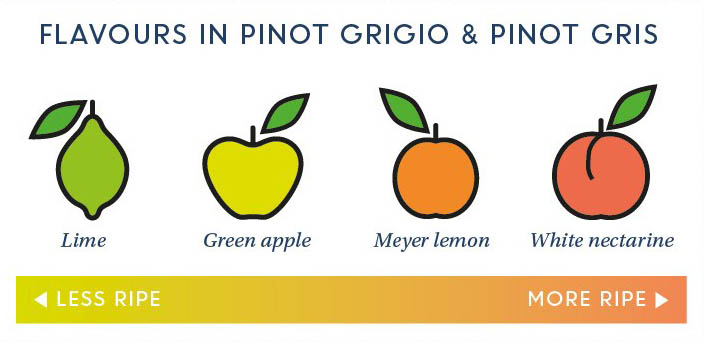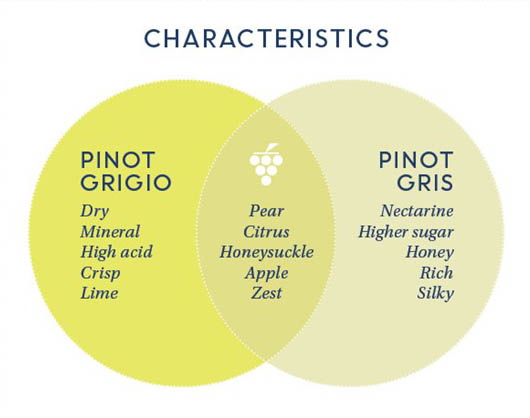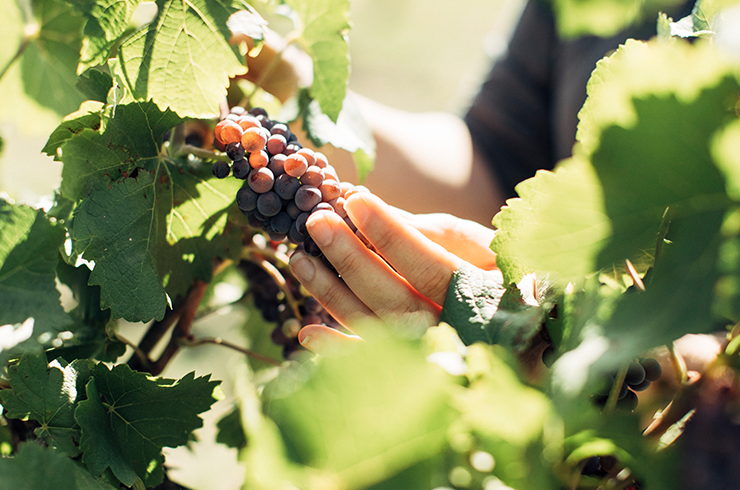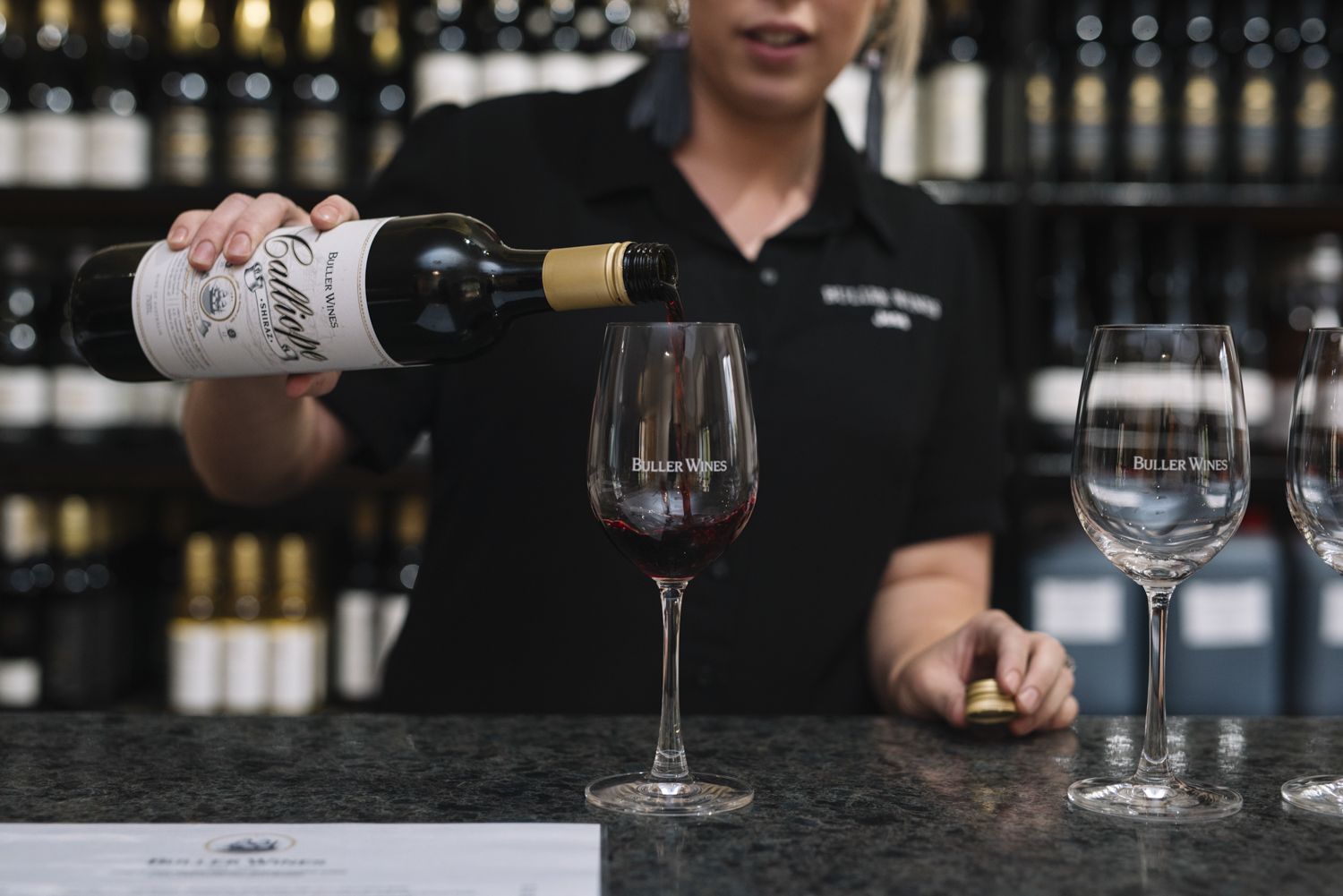Go to section: Pinot gris and pinot grigio tasting characteristics | Origins of pinot gris and pinot grigio | How to pair food with pinot gris and pinot grigio | Serving temperature for pinot gris and pinot grigio | The best Australian pinot gris and pinot grigio regions
Pinot Grigio vs Pinot Gris
Like a Shakespearean tale, what we have in pinot gris and grigio is two wines, both alike in dignity and yet different in style. Named for its grey-red colour as a grape (gris and grigio translate to ‘grey’ in French and Italian respectively), this varietal is most famous for its refreshing citrus and zesty acidity. And with approximately 60,000 hectares of pinot gris/grigio worldwide, its popularity is reflected in its plantings.
Pinot gris and pinot grigio tasting characteristics
In Australia, winemakers have the freedom to use the labels gris and grigio interchangeably, although there is the unregulated understanding that wines with a higher level of extract could/should be labelled pinot gris and those with less extract named pinot grigio.
Origins of pinot gris and pinot grigio
Like its namesake – pinot noir – the gris/grigio variety originally hails from Burgundy in France. The history books show, however, that the variety travelled all over the world under many different titles, packing its vinous suitcase and planting where it landed.The very first reference to pinot gris dates back to the Middle Ages when it was commonly referred to as either fourmenteau/fromenteau gris or malvoisie. While the variety was also produced across the Pfalz and Baden-Wurttenberg regions of Germany, and nowadays in Australia, the USA and New Zealand, if we had to name a spiritual homeland for gris and grigio respectively it would be Alsace and northern Italy.
In Australia:
“The emergence of pinot gris in the cooler regions of Australia made sense, and created such interest in the variety that it became a cult wine.” – James Halliday
Historically speaking, pinot gris was first introduced to Australia through the 1832 James Busby collection in the Hunter Valley, but it wasn’t until the 1990s that pinot gris really found its legs.
The emergence came about thanks to the work of Mornington Peninsula winemaking couple Kathleen Quealy and Kevin McCarthy at their former winery, T’Gallant. Their first vintage release in 1993 single-handedly set the benchmark for the variety in Australia.
After discovering that gris not only survived, but also thrived in our cooler climates, further regional expressions quickly grew out of Tasmania (think Bay of Fires, Derwent Estate, Tamar Ridge), Victoria (T’Gallant, Quealy Wines and Yabby Lake) and South Australia (Henschke, Petaluma and Bleasdale). In fact, pinot gris and grigio plantings have exploded more quickly than any other recent varietal arrival Down Under.
While these wines aren’t united by a single varietal flavour or aroma, it can be said that apple, pear, honeysuckle and citrus are the most common characteristics found across the gris/grigio tasting bench.
If you’re making gris in Australia, the vinification often involves barrel fermentation, whereas grigio is typically a cold-ferment in stainless steel. This means that gris leans towards the more full-bodied end of the spectrum, resplendent in spiced pear and honey, and can boast a higher sugar content than the more mineral, zesty, acid-driven grigio.
How to pair food with pinot gris and pinot grigio
Sommeliers agree that pinot gris and pinot grigio make great dinner-time companions. If you’re looking for a food option to complement a special bottle, the key here is to think fresh. This is a zippy and naturally high-acid wine style, so fish and shellfish are classic matches, as are semi-soft to firm cow cheeses like gruyere, washed rind and Grana Padano, and white meats such as chicken and turkey that may be infused with a hint of parsley, saffron, thyme or clove. Theoretically, pinot gris (especially expressions from the US and Australia) has more weight and alcohol behind it, so you could pair it with richer dishes such as baked salmon or pork rillette. Continue learning about pairing wine with food.
Serving temperature for pinot gris and pinot grigio
The ideal serving temperature for pinot gris and pinot grigio is 6–8 degrees.-
THE BEST AUSTRALIAN PINOT GRIS AND PINOT GRIGIO TASTING NOTES
-
Chrismont
Pinot Gris 2021
King Valley -
Mayer
Bloody Hill Villages Healesville Pinot Gris 2022
Yarra Valley -
Moorooduc Estate
Pinot Gris On Skins 2018
-
La Prova
Pinot Grigio 2021
Adelaide Hills -
Indigo Vineyard
Pinot Grigio 2021
Beechworth
The best Australian pinot gris and pinot grigio regions
Pinot gris and pinot grigio are produced the world over and yet the finished glass of wine varies dramatically depending on region:Australia’s cooler climates run the gamut of pinot gris/grigio expressions. You can find alpine, Italian-style grigios coming out of the King Valley, or richer, Alsatian-style whites in Tasmania and the Mornington Peninsula.
Sign up to view these tasting notes and ratings
By becoming a member of Wine Companion, you'll have access to the largest database of wines in Australia.


















